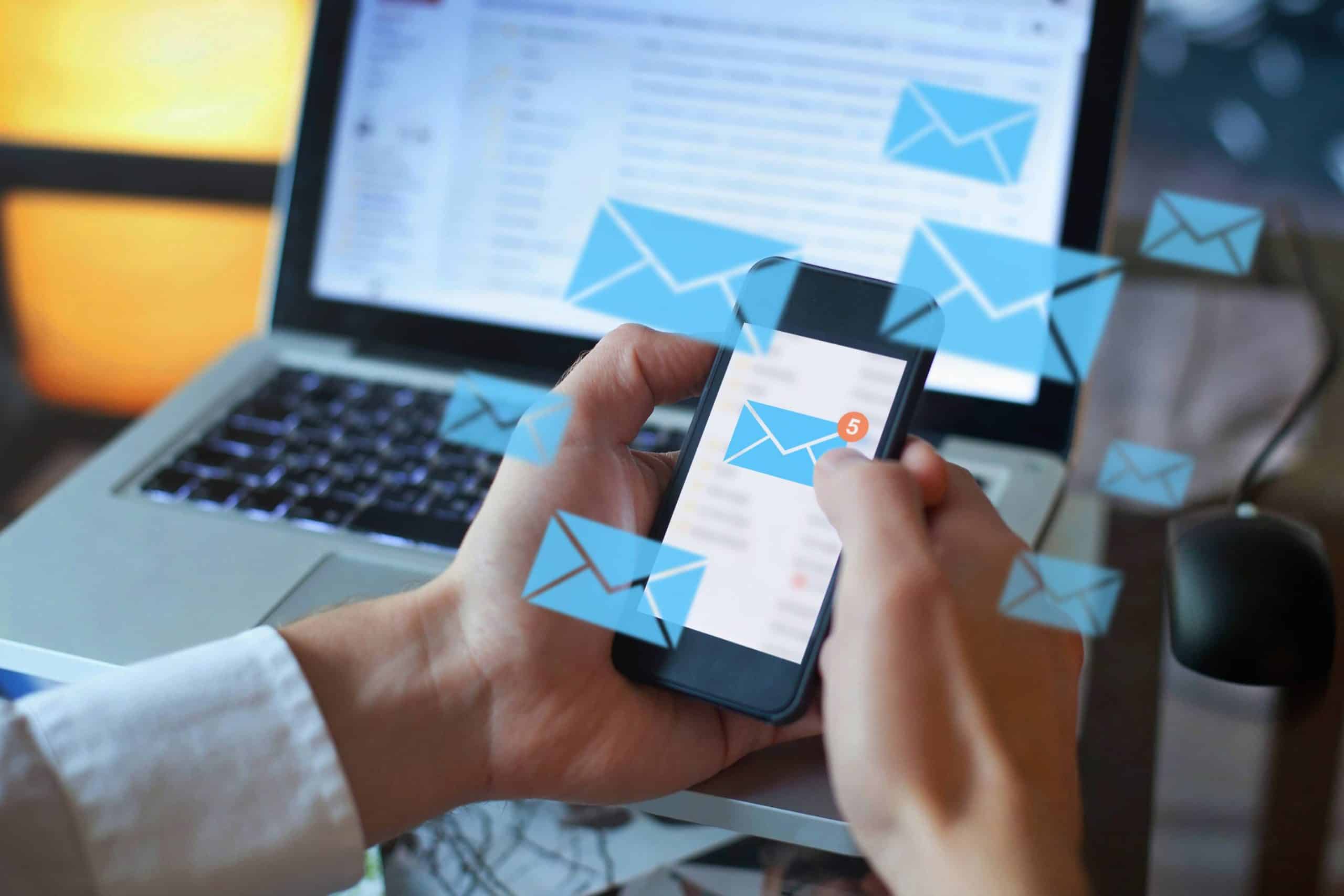- 💌 Effective email marketing is essential for engaging and retaining customers.
- 📧 Email marketing provides a direct and personal way to connect with customers.
- 🎯 Tailoring email content through segmentation and personalization boosts engagement.
- 🤖 Automated email campaigns help maintain consistent communication without manual effort.
- 📱 Mobile optimization is crucial for enhancing user experience on smartphones.
- 🤓 A/B testing helps refine strategies by comparing different email elements.
- 🗳 Interactive emails increase user engagement through polls, surveys, or clickable content.
- 📅 Drip campaigns nurture leads by sending a series of emails automatically over time.
- 🌟 Offering value-driven content builds trust and positions your brand as an authority.
- 👍 User-generated content and testimonials enhance brand credibility and engagement.
- 🔄 Re-engagement campaigns target inactive subscribers to recapture their interest.
- 🔗 Integrating social media with email marketing boosts online reach and presence.
- 📊 Aligning strategies with business goals ensures email marketing contributes to business growth.
- 🧮 Measuring success involves key metrics like open rate, click-through rate, and conversion rate.
- 🚫 Avoid pitfalls like neglecting mobile optimization, insufficient segmentation, and lack of testing.
Email marketing continues to stand as one of the most effective channels for engaging and retaining customers. It provides a direct and personal way to connect with a target audience. In this comprehensive guide, we will delve into actionable email marketing strategies that can boost your engagement rates and help turn subscribers into loyal customers.
The Importance of Email Marketing
Email marketing’s unparalleled ability to offer direct and personal communication makes it a cornerstone of digital marketing initiatives. Here’s why it remains essential:
- Personalized Interaction: Unlike social media ads that pop up at random times, emails land directly in the inbox, where people are most likely to engage with them.
- High ROI: With its robust return on investment, email marketing outperforms many other marketing channels.
Key Strategies for Effective Email Marketing
Segmentation and Personalization 🎯
Tailoring your email content to meet the specific interests and needs of different audience segments can significantly boost engagement.
How to Implement:
- Analyze subscriber data to create personalized messages.
- Examples: A fashion retailer can send different emails based on purchase history. A travel agency can recommend destinations based on past bookings.
Automated Email Campaigns 🤖
Automation allows for timely communication without manual effort, making it a must-have for modern email marketing strategies.
How to Implement:
- Set up automated sequences for welcome emails, promotional offers, and re-engagement campaigns.
- Examples: Welcome series for new subscribers or birthday emails offering special discounts.
Mobile Optimization 📱
With the increasing use of smartphones, ensuring your emails are mobile-friendly is crucial.
How to Implement:
- Use responsive design and clear, easily clickable CTAs.
- Examples: Promotional emails that adjust layout based on device screen size.
A/B Testing 🤓
Testing variations of an email can provide insights that help in continually refining your strategy.
How to Implement:
- Test different subject lines, layouts, and CTAs.
- Examples: Compare performance of two different email layouts.
Interactive Emails 🗳
Adding interactive elements can significantly boost user engagement.
How to Implement:
- Include polls, surveys, and clickable quizzes in your emails.
- Examples: Quizzes to determine personal style for a fashion brand.
Drip Campaigns 📅
Drip campaigns send a series of emails automatically based on specific timelines or user actions.
How to Implement:
- Use drip campaigns for lead nurturing and post-purchase education.
- Examples: A series of educational emails following a webinar registration.
Value-Driven Content 🌟
Offering valuable content beyond promotional material builds trust and positions your brand as an authority.
How to Implement:
- Send educational articles, industry insights, or helpful tips.
- Examples: Weekly recipes from a cooking blog or investment tips from a financial services company.
User-Generated Content and Testimonials 👍
Showcasing customer reviews or testimonials can enhance credibility and engagement.
How to Implement:
- Include authentic user-generated content in your emails.
- Examples: Customer before-and-after photos for a beauty brand.
Re-Engagement Campaigns 🔄
Target inactive subscribers to recapture their interest with personalized offers or feedback requests.
How to Implement:
- Send special offers or updates about new products.
- Examples: Survey emails asking for content preferences.
Integration With Social Media 🔗
Enhance your email marketing by integrating it with your social media efforts to create a cohesive brand experience.
How to Implement:
- Encourage email subscribers to follow your social media channels and vice versa.
- Examples: Social media contests promoted via email campaigns.
Aligning Email Marketing Strategies With Business Goals 📊
The efficacy of your email marketing efforts can be significantly magnified when aligned with your overarching business goals. Here’s how you can ensure this alignment:
- Increasing Sales: Utilize targeted promotional campaigns and personalized product recommendations.
- Enhancing Brand Awareness: Focus on content-rich newsletters and captivating storytelling.
- Strengthening Customer Loyalty: Implement loyalty programs and exclusive offers.
- Gathering Customer Feedback: Use surveys and feedback forms to understand customer preferences.
- Lead Nurturing: Employ educational content to move leads through the sales funnel.
Measuring Success: Key Metrics 🧮
To ascertain the success of your email marketing strategies, monitoring certain key metrics is essential:
- Open Rate: Percentage of recipients who opened your email.
- Click-Through Rate (CTR): Percentage of recipients clicking on links in the email.
- Conversion Rate: Percentage of recipients who completed a desired action.
- Bounce Rate: Percentage of emails not delivered to the recipient’s inbox.
- List Growth Rate: Speed at which your email list is growing.
- Unsubscribe Rate: Percentage of recipients unsubscribing from your list.
- Email Sharing/Forwarding Rate: Frequency at which your email is shared or forwarded.
Email Marketing Best Practices 🚫
By adhering to best practices and avoiding common pitfalls, you can maximize the return on your email marketing efforts:
- Optimize for Mobile: Always test emails on various devices.
- Segment Your List: Tailor messages to different audience segments.
- Find the Right Frequency: Balance the number of emails sent to avoid overwhelming subscribers.
- Craft Compelling Subject Lines: Invest time in creating engaging subject lines.
- Clean Your Email List: Regularly remove inactive subscribers to maintain list health.
- Regularly A/B Test: Continuously test to find what resonates best with your audience.
- Include Clear CTAs: Ensure your calls to action are easily identifiable and actionable.
- Leverage Data: Use analytics and feedback to make informed decisions.
Conclusion
Email marketing remains an indispensable tool for businesses aiming to build relationships and drive sales. By implementing these strategies and aligning them with your business goals, you can create compelling and effective email campaigns that resonate with your audience.







